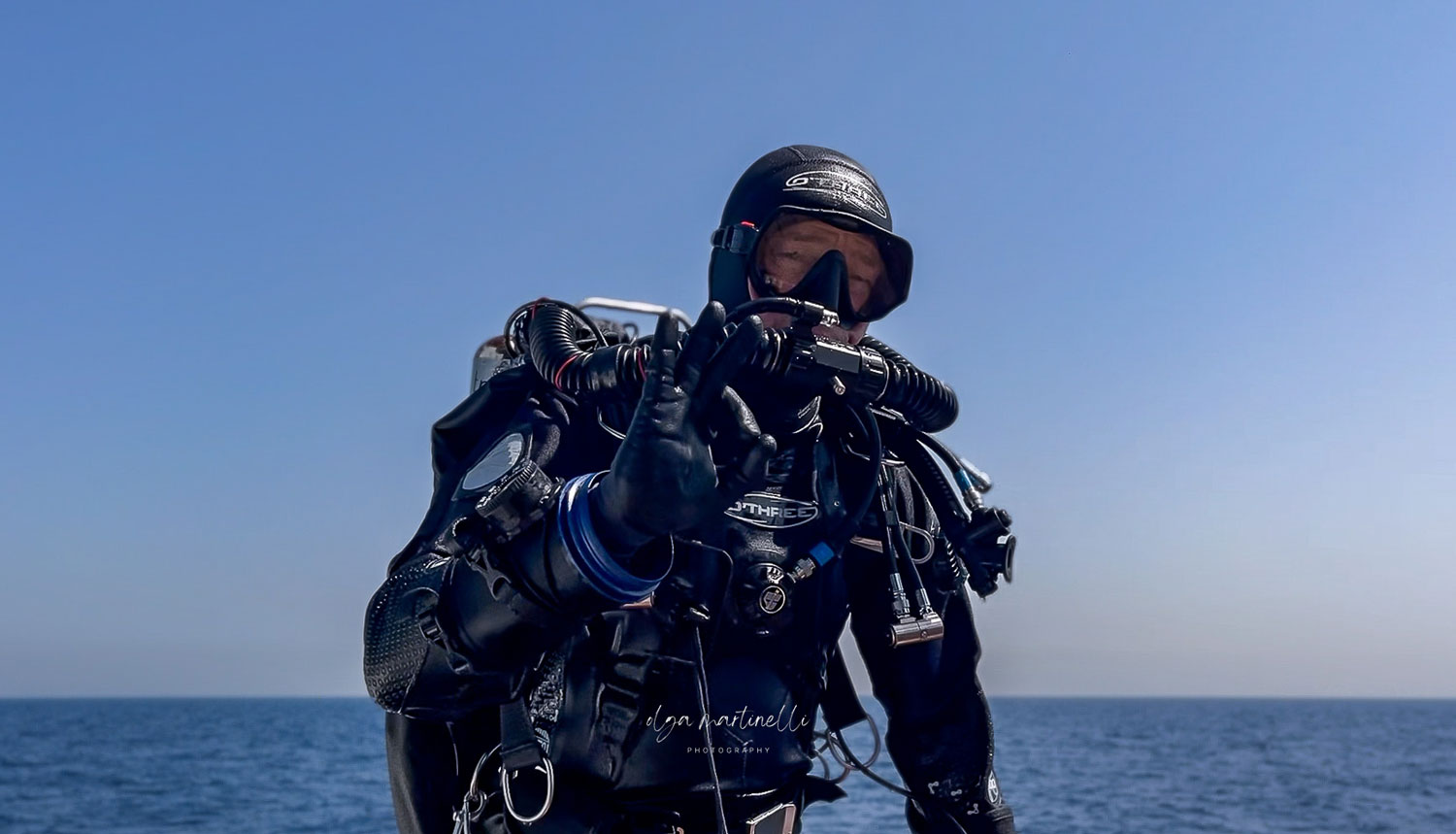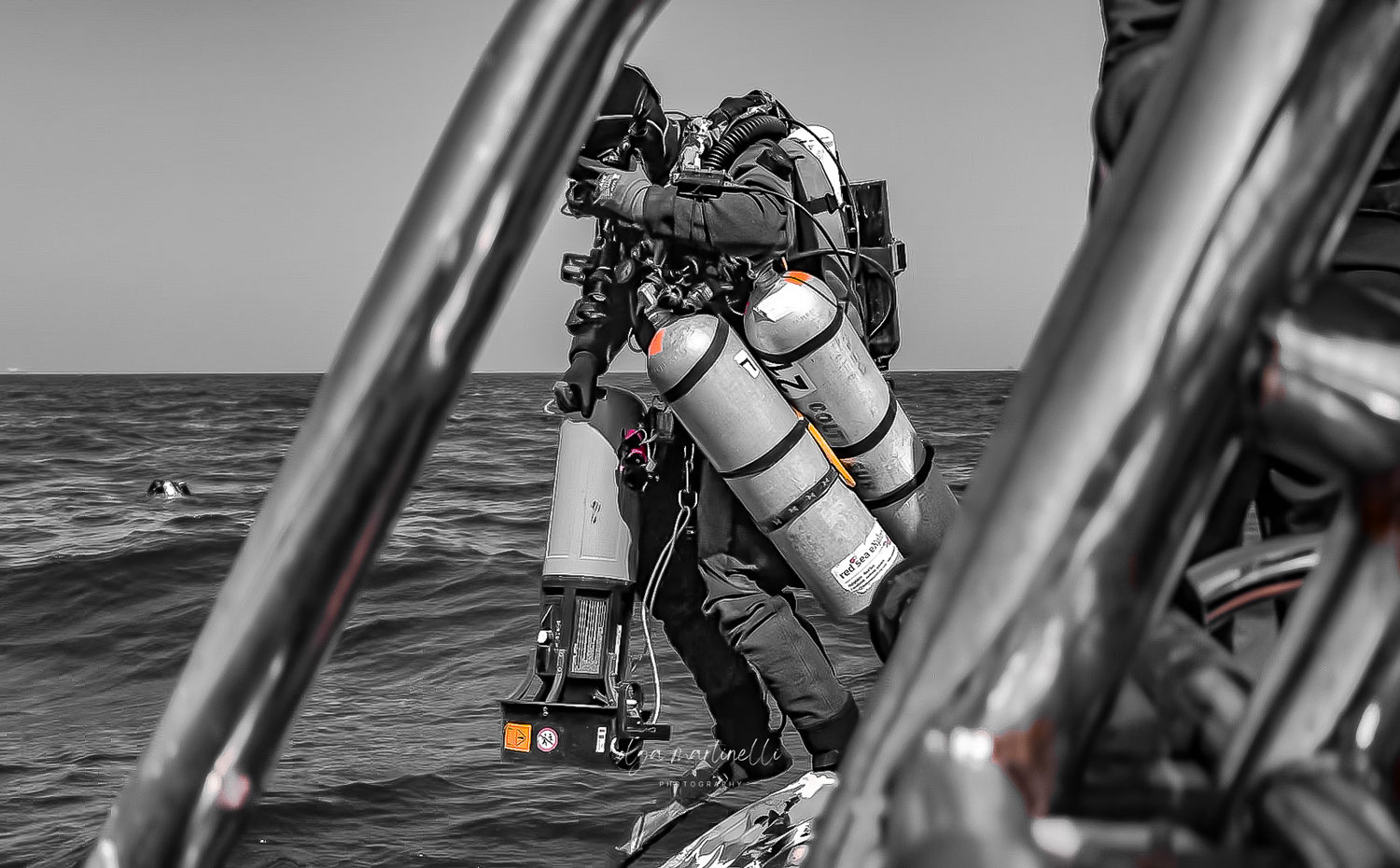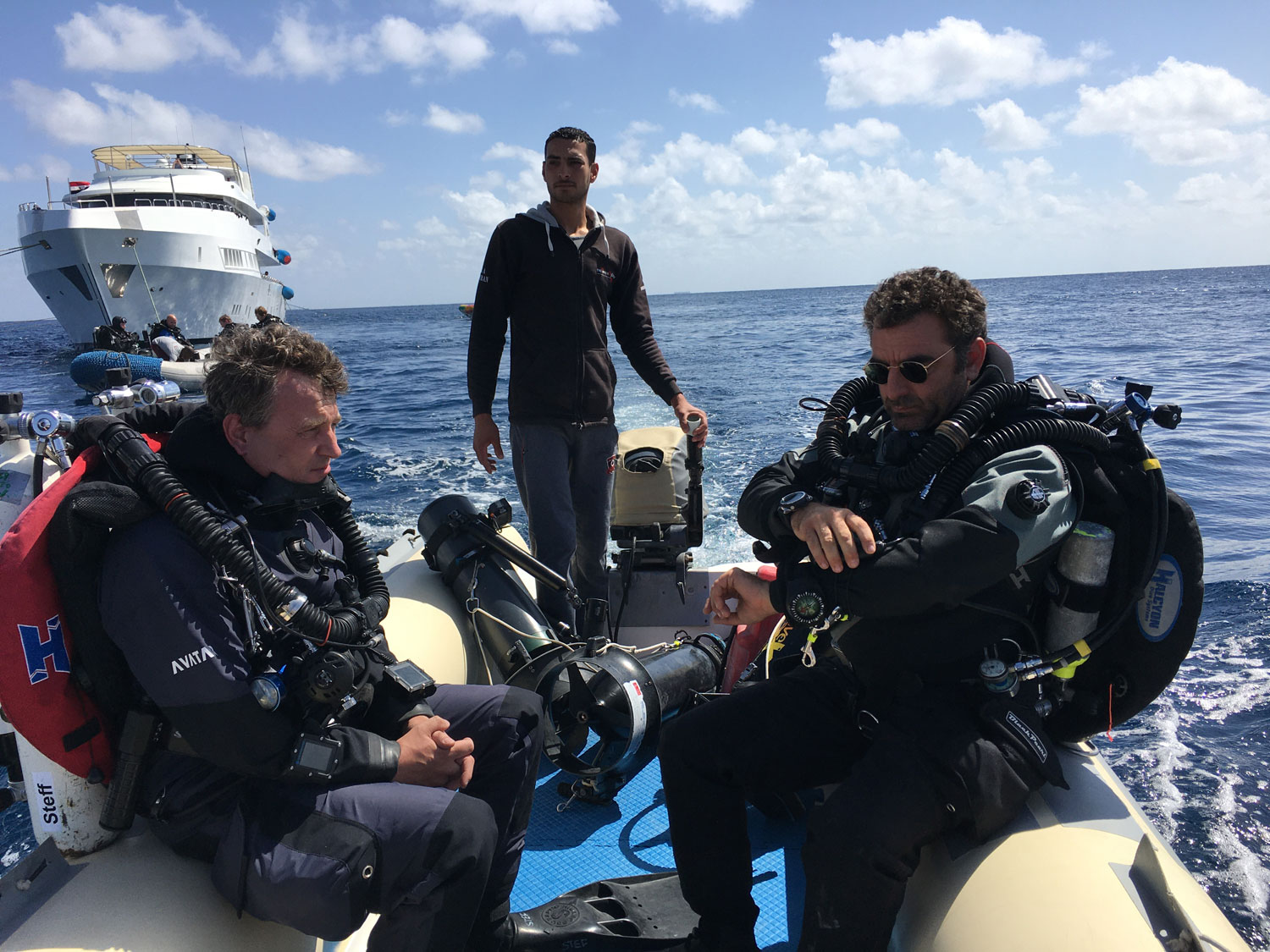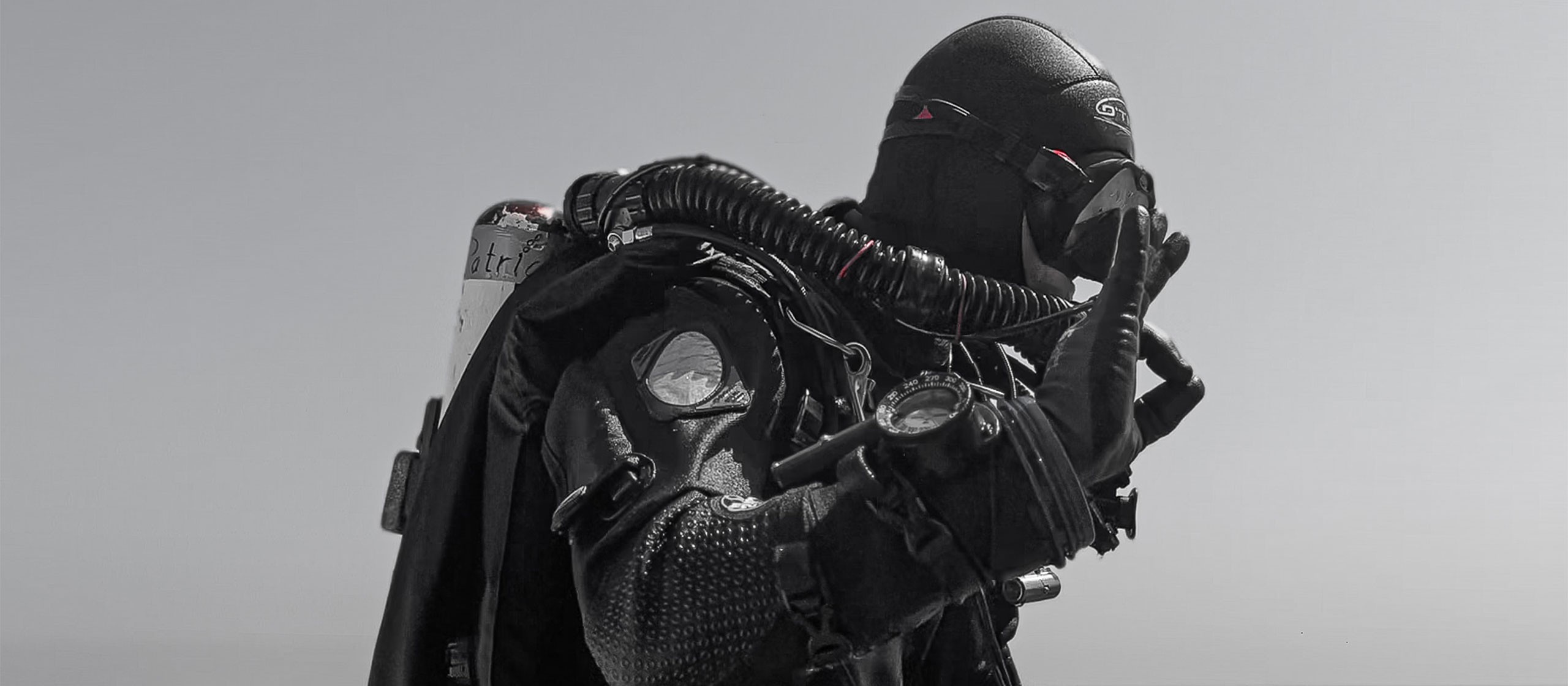Features
Are rebreathers suitable for recreational divers? – Part 2
In part one this story, we reviewed the advantages of rebreathers for technical divers. In this second part, we examine the efficacy of rebreather technology for recreational divers.
The first advantage we looked at for the technical diver is gas duration. This is also a benefit for recreational divers. They may not be doing such long dives but for many divers their air consumption and the fact that they are using a single cylinder means that the limiting factor for most dives is gas duration. A rebreather can significantly increase the amount of time they can spend underwater.
While gas duration is still a benefit for the recreational rebreather diver, gas costs are not an advantage and in fact are a disadvantage. On open circuit, you may only need to pay for an air fill in a single cylinder but on even the shallowest rebreather dive you will still need to use pure oxygen in one of the cylinders and carbon dioxide absorbent in the rebreather. The annual replacement of the three oxygen sensors and handset batteries also needs to be taken into account.
This means that the gas cost for a shallow recreational dive may only cost €5 for an open circuit diver but €10-€15 for a rebreather diver. Unless you are doing significant numbers of deep trimix dives a year with little or no recreational diving then the gas savings from using a rebreather will not outweigh the initial start up costs. However, there are still a number of other reasons why a rebreather is an attractive option.
Logistics and decompression benefits?
Gas logistics are another area where the recreational diver does not have as much of an advantage when they switch to a rebreather. Getting air fills in a single cylinder is a relatively easy process and just about every dive centre in the world can provide this service. Nitrox is not as common but is still widely available. However, high pressure oxygen may not be as readily available and may mean that a recreational dive centre will be unable to support recreational rebreather diving.
A reduced decompression obligation on the other hand is still very much an advantage for recreational divers. Breathing the optimum gas mix at every point in the dive significantly reduces the amount of inert gas we take on and can significantly increase our no stop dive. Even though recreational divers are not doing mandatory decompression stops the decompression implications are ironically one of the biggest advantages for recreational divers.
While some of the advantages enjoyed by technical divers are not as relevant for recreational divers there are some additional advantages for the recreational diver switching to a rebreather. The fact that there are no bubbles means that we can get closer to marine life. As most of the marine life lives in the shallows this is more relevant to recreational divers. It’s not until you swim along a reef on a rebreather that you realise just how much the open circuit bubbles scare off the marine life.

 Additional Costs, Risks and Complications
Additional Costs, Risks and Complications
However, a rebreather introduces several significant additional costs, risks and complications to any dive and should not be seen as a magic wand to solve all of the potential problems of deep technical diving and introduces significant additional considerations to recreational diving.
In the first place, buying a rebreather is an expensive proposition. Prices vary from €3500 to over €8,000 for the unit alone. When combined with training and the inevitable extra bits of kit, it is a false economy to buy a rebreather in order to save money on gas fills for technical divers let alone recreational divers. There have been a number of attempts to introduce a “cost effective” recreational rebreather but these have only been partially successful.
In addition to the cost, there are a number of risks introduced by using a rebreather.
Avoiding problems with carbon dioxide
Whenever we breathe out as well as exhaling the remaining oxygen and inert gas, the body has also added carbon dioxide. If our breath is recycled without removing the carbon dioxide, then the levels will build up and eventually the diver will succumb to carbon dioxide poisoning, this is one of the biggest risks of rebreather diving. In order to avoid this, the carbon dioxide must be removed by a chemical process.
This takes place when the exhaled gas passes through a scrubber which is packed with a suitable chemical designed to remove the carbon dioxide. Correctly packing the scrubber is one of the most important steps in preparing a rebreather as incorrect packing can allow carbon dioxide to be ‘channelled’ through the scrubber and cause a build-up in the breathing loop and lead to carbon dioxide poisoning.
This can cause headaches, lack of concentration, unconsciousness, and death. Unfortunately, the diver suffering from this condition may be unaware of the condition or may be so incapacitated as to be unable to respond to the problem.
Overusing the scrubber material is another potential cause of carbon dioxide poisoning and for this reason it is vital to monitor the amount of time that the material has been used and to replace it at the appropriate time. If there is any doubt in the diver’s mind that they may be suffering from carbon dioxide poisoning then they are taught to bailout to a known source of gas.
The importance of open circuit bailout
For this reason, rebreather divers carry open circuit bailout gas. In addition, many rebreathers are supplied with a Bail Out Valve (BOV) which allows the diver to switch from the rebreather loop to an open circuit regulator with the turn of a valve. Of course, once the diver has bailed out to open circuit, they are limited by all the same gas consumption issues that the open circuit diver has to face.
This is one of the reasons why a rebreather is not necessarily the full solution for deep technical diving. The diver will need to carry enough gas in order to be able to safely ascend in the case of a problem with their rebreather and so will have to carry the same amount of decompression gas as an open circuit diver.
Equally this is also one of the disadvantages to using rebreathers in the recreational area. The diver still needs to carry some form of open circuit bailout in order to get them to the surface should the rebreather have a problem. In some cases, the open circuit bailout is exactly the same cylinder they would be using if they were doing the dive on an open circuit and so they end up carrying significantly more equipment in order to do a relatively simple dive.

Oxygen management
In addition to excess carbon dioxide, the other big danger that rebreather divers face is an incorrect partial pressure of oxygen. In an eCCR, the rebreather itself maintains the partial pressure of oxygen within the breathing loop whilst on an mCCR it is the divers’ responsibility to maintain the partial pressure. Either way, it is always the diver’s responsibility to know their partial pressure at all times and this is one of the golden rules of rebreather diving.
All rebreathers will have a display which shows the partial pressure of oxygen. This can be an electronic gauge which is often wrist- or console-mounted or can be a visual display using coloured LEDs.
These Head Up Displays (HUDs) can provide instant warnings of incorrect partial pressure levels. During the dive, a diver will usually aim to maintain a partial pressure of between 1.0 and 1.4 bar of oxygen. This is known as a ‘set point’. Allowing the partial pressure to rise to high can lead to oxygen toxicity problems whilst allowing it to fall too low can lead to hypoxia and a blackout.
More complex than open circuit scuba
The equipment used in a rebreather is more complicated than open circuit and the procedures required are more detailed and intensive. Preparing a rebreather to dive will inevitably take more time than preparing open circuit equipment.
The added complication of the kit also increases the chances of a problem occurring, either before the dive causing it to be aborted, or during the dive causing potentially more serious problems.
These considerations are covered in extensive detail during any rebreather training course but one of the biggest dangers for rebreather divers is complacency. As they build their experience, they start to take short-cuts or start to neglect basic checks. It is typically divers who have around 50 hours of experience who tend to fall into this complacency trap.
But I want one
Even if you won’t save money and don’t need a rebreather for logistic reasons, there are still other reasons to switch. Diving is a hobby and so does not always have to be justified on cost reasons.
The cheapest option is not to dive but most of us do not consider this a possibility. In the same way that some people spend their money on motorbikes, horses, home cinemas, model helicopters or any other hobby, there is no reason why someone shouldn’t spend their money on a rebreather just because they want one. Other people may switch to a rebreather to challenge themselves to learn something new.
Should you switch?
As we have seen there are several reasons why many divers want to switch to a rebreather. However, the risks of rebreather diving mean that there are some people who are better suited to rebreather diving than others. Rebreathers are significantly more complicated pieces of equipment than an open circuit scuba set.
Whilst rebreathers do not require a huge amount of effort, they do nonetheless require more care and maintenance than open circuit. For divers that throw their kit into the back of the car or into the garage and then don’t look at it until the next dive, this can cause a problem. This type of person is not really suited to rebreather diving unless they can discipline themselves to ensure they maintain the rebreather.
On the other hand, there are many divers who enjoy cleaning and maintaining their equipment almost as much as the dive itself. They get pleasure from adjusting the kit until it is just right and it is viewed as part of the hobby rather than an added chore they must do. This type of person is ideally suited to rebreather diving.

The need for diving discipline
In addition to cleaning and maintenance, rebreathers require discipline whilst diving them. There is a certain mindset that is required to ensure that the unit is assembled correctly each time and that all of the pre-dive checks are rigorously followed. Most rebreather accidents are caused by the divers not following the correct procedure. This includes not diving the unit if there is any problem with it.
Many divers become complacent and will dive with known problems with their rebreather. They are confident that they can overcome the problem and in the majority of cases they manage to deal with the known problem. However, if there is any problem during the dive, the impact of the initial problem can be significantly increased by subsequent problems.
It requires a significant level of discipline to call off a dive for what might appear to be a minor problem but becoming complacent about these failures is one of the most common causes of rebreather accidents. During the dive, the diver must constantly monitor the unit to ensure it is operating correctly. This is summed up by the golden rule of rebreather diving “Always know your partial pressure”.
It doesn’t matter if the diver is at 10m or 100m, the level of monitoring is the same and so a 10m dive must be approached with the same mindset as a 100m dive. As such, there is no such thing as a casual rebreather dive. Not all divers have the mindset to adjust to rebreather diving but without this mindset they should not consider rebreather diving.
Additional skills required
In order to be a safe rebreather diver, there are a number of skills that need to be mastered over and above the basic open circuit skills. Some of these are related to the normal operation of the rebreather and some are related to emergency situations. Like any skill, it takes practice to master these skills and practice to maintain them.
When moving from open circuit to a rebreather, there are skills, like buoyancy control which must be re-learnt. This takes time and effort. For an experienced diver, this means the frustrating process of going back to basics and building up their experience.
Unless you are prepared to put in the time to master the basic skills, you will always be diving on a base of weak rebreather skills, even if you were previously a very experienced open circuit diver. These skills also need to be practised regularly in order to ensure that they are maintained. This means that it is essential to dive a rebreather regularly in order to maintain the appropriate skill levels.
For these reasons, not all technical divers have adopted rebreathers and for recreational diving there are only a tiny minority of recreational divers using a rebreather. It is clear that for some people a rebreather is a desirable or a personal interest and in some cases an essential way to progress their technical diving. For others, the advantages do not necessarily outweigh the disadvantages.
For this reason, it is a very personal decision and not one to be taken lightly. First you must decide whether there is a good reason to dive a rebreather and then whether you have the right mindset to be able to dive it safely. Like many things, the correct decision will vary from one person to another.
About the author
Mark had his first experience of diving at the age of 10 when he did a try-dive in a local pool. He was hooked from that point onwards. He learnt to dive in 1987 and has been diving ever since. Mark became an instructor in 1994 and has been actively instructing since then. In 2002, Mark set up Dive-Tech, a dedicated technical diving facility, with the intention of providing the highest quality technical diving training. Dive-Tech provides technical training at all levels up to and including CCR Advanced Mixed Gas Instructor Trainer. Mark is a TDI/SDI Instructor Trainer and a member of TDI/SDI’s Global Training Advisor Panel. He also represents TDI/SDI on a number of international standards groups. He is a regular contributor to a number of diving magazines, the author of “Deco for Divers,” and “Technical Diving: An Introduction,” and a regular speaker at diving conferences around the world.

